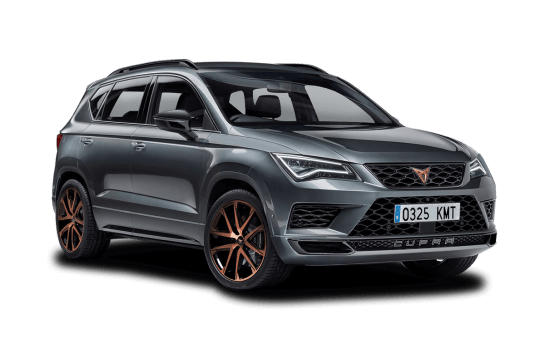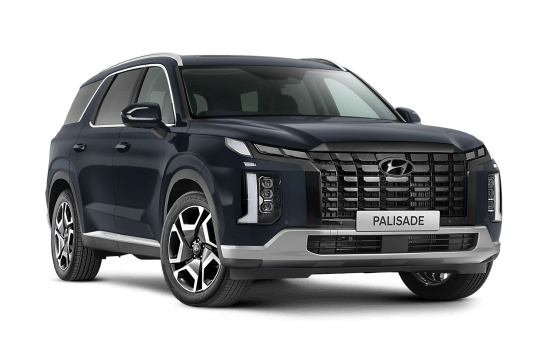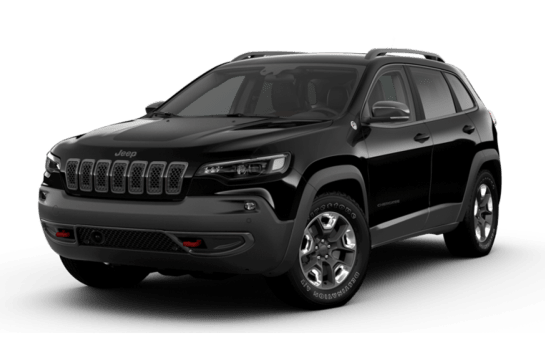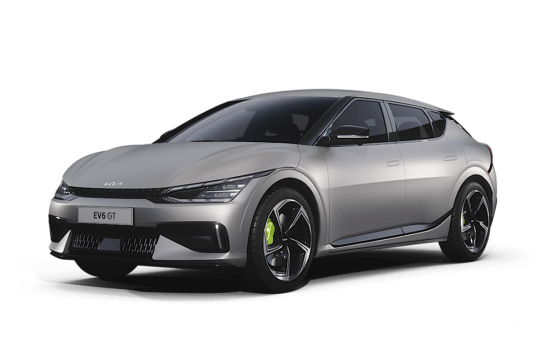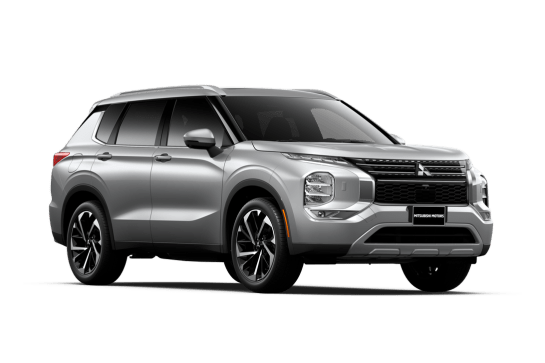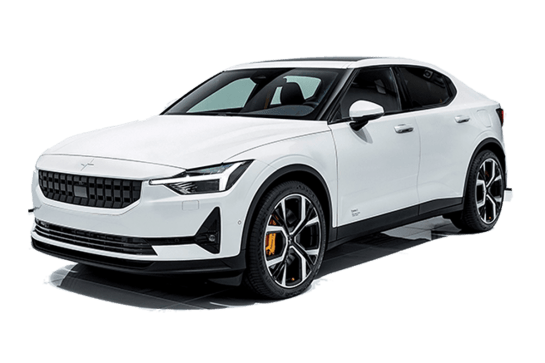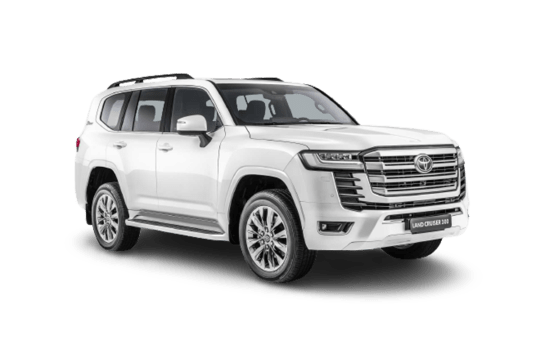
Land Rover Discovery Sport VS Ford Everest
Land Rover Discovery Sport
Likes
- Cabin is both large and practical
- Economical to run
- Mostly smooth to drive
Dislikes
- Paying extra for features may irk
- More expensive than flagship model
- Some tech needs work
Ford Everest
Likes
- Decent all-terrain tyres
- Off-road suspension
- Solid off-road performer
Dislikes
- Firm ride
- Fiddly transmission shifter
- Operating off-road assist tech can be confusing
Summary
Land Rover Discovery Sport
The Land Rover Discovery Sport is the sort of Land Rover you consider if you're not that serious about going off-road but still want something capable, but you don't want a car as large as it's Range Rover cousins.
Bonus points, the P300e mid-spec model I'm testing this week is a plug-in hybrid. So, you get the best of all worlds - capability, decent size and economy.
The new powertrain pits it against the Lexus NX450+, Volvo XC60, Audi Q5 and even the BMW X3 but while the P300e is great on paper, how does it stack-up in real life?
Read more about
- Land Rover Australian sales through the roof: Defender, Discovery and Range Rover Evoque star in spectacular year-on-year increases that leave competitors like Jeep, Mercedes-Benz and Audi in the shade
- England's pricey answer to the Suzuki Jimny? Baby electric version of Land Rover Defender coming by 2027 - report
- But what does it stand for? Land Rover brand axed as Jaguar Land Rover renamed 'JLR' to launch Range Rover, Discovery, Defender and Jaguar as individual brands
| Safety rating | |
|---|---|
| Engine Type | 1.5L turbo |
| Fuel Type | — |
| Fuel Efficiency | 2.1L/100km |
| Seating | 5 seats |
Ford Everest
The Ford Ranger line-up’s limited-edition Tremor arrived here in the second half of 2024, now the Ford Everest gets its own Tremor.
Based on the Everest Sport, this Tremor is not a limited-edition variant and gets the 3.0-litre, turbo-diesel V6 engine (rather than the Ranger Tremor’s 2.0-litre four-cylinder twin-turbo diesel), and to boost the 4WD wagon’s off-road capability, Ford has given it new longer coil springs, Bilstein dampers and General Grabber AT3 all-terrain tyres.
The Tremor also gets 'Rock Crawl' drive mode, heavy-duty bash plates and side steps, as well as some Tremor-specific styling and branding inside and out.
Read more about
- 2026 Ford Ranger to evolve, expand: what's next for Australia's best-seller as it fends off the facelifted Toyota HiLux, Kia Tasman, next-gen Nissan Navara and MG U9 ute
- World-first Ford Ranger Super Duty shocks with beefy fresh look and bold can-do attitude, but can this Australian-developed pick-up scare the Ram 1500 and Chevrolet Silverado?
- Ford forced to axe cars due to government emissions regulations: 2025 Ford Everest 2WD ditched in Australia as NVES bite, with the Isuzu MU-X in danger too
So, is this bush-boosted 4WD wagon worth your consideration?
Read on.
| Safety rating | |
|---|---|
| Engine Type | 3.0L turbo |
| Fuel Type | Diesel |
| Fuel Efficiency | 8.5L/100km |
| Seating | 7 seats |
Verdict
Land Rover Discovery Sport7.6/10
The Land Rover Discovery Sport P300e has a beautiful and practical cabin space. The powertrain didn't always convince me on the road but it does offer decent economy, if you charge it often.
The media system left a lot to be desired and having to pay around $15K extra for all of the customisations means it's not as affordable as what it initially seems. Still, if you’re looking for a plug-in hybrid with a great cabin and on-road looks, this is a good option.
Ford Everest7.5/10
The standard Ford Everest – powered by a 2.0-litre twin-turbo or a V6 – is a nicely refined, comfortable and capable 4WD with plenty of potential as a touring vehicle.
The Tremor treatment doesn’t turn the Everest into a Raptor-esque Everest but it does offer low-key substantial off-road improvements to what was already an impressive 4WD wagon.
This sensible package of upgrades – more ground clearance, off-road-suited suspension, and decent all-terrain tyres – gives this Everest a mild 4WD boost.
Design
Land Rover Discovery Sport
The updated Disco Sport gets new underpinnings which are shared with the Range Rover Evoque.
The body has seen a minor facelift but honestly, it’s so slight only die-hard fans will notice anything different. Overall, it still has the styling that people know and love.
It’s once you head inside that the facelift becomes far more apparent. Gone is the more traditional looking e-shifter and in its place is a rather nubby-looking one.
The dashboard looks more streamlined and features wider padded accents and in our test model, we have the Oyster and Black upholstery which does make it look quite luxurious. There are a few too many blank spaces for me personally but it looks slick.
Accentuating the dashboard is a floating-effect multimedia system and a large digital instrument cluster – both of which look great but there are no other control buttons or dials. I’m not a fan of the fact that you’re 100 per cent reliant on the tech screens and I'll explain why in the Practicality section.
The optioned panoramic roof makes the cabin feel airy and it's cool that it has a memory function – it will close when you turn off the car but reopen upon starting again.
Ford Everest
Lift any vehicle a few millimetres and throw decent all-terrain tyres on it and that one-two combination instantly gives the vehicle more track-cred.
And so it goes for the Everest Tremor.
But there’s more going on here than simply increased height and a swap-out of rubber over standard Everests.
As mentioned, it gets Bilstein dampers, new springs, and tough all-terrain tyres which combine to give the Tremor a solid presence.
The new honeycomb-pattern grille with auxiliary LED lights, quite visible steel bash plate, pronounced heavy-duty side steps and orange Tremor branding add to the package.
And inside it gets those Tremor-specific touches, such as the leather-accented seats embossed with Tremor branding, ebony-coloured interior accents and all-weather floor mats.
Practicality
Land Rover Discovery Sport
With it's 4597mm length, 2173mm width and 1727mm height, the Discovery Sport is technically classed as a medium SUV but the cabin space is much larger than it has any right to be.
Both rows have ample head- and legroom for both my 168cm (5ft6') height and those much taller. When you have a co-pilot, you’re also not jostling for elbow room and it’s easy to slide in and out of because of the 212mm ground clearance.
The amenities up front are good with the update seeing more decent sized individual storage options.
There are two cubbies in the centre console as well as two cupholders and a medium-sized middle console. The glove box can hold more than a manual and the storage bins with their single drink bottle holders are also larger than before.
The powered front seats are comfortable and the optioned heat functions are most welcome on the cooler days we've been having lately.
The back seats also have superior padding comfort but you sit on top of, rather than in, them which is typical of an SUV.
The amenities and storage are what you would expect for the grade level with a fold-down armrest with two cup holders and small storage cubby, directional air vents, reading lights, map pockets and small storage bin in each door.
There is also an accessory hole to attach device holders on the backs of the front seats - perfect for hooking up a screen for little ones on a long journey.
The P300e loses points on its practicality with the multimedia system. You eventually get used to using it while on the go, even though the lack of buttons/dials means more time is spent with your eyes on the screen.
That's when the screen turns on. The display has cut out a few times this week and the wireless connectivity for Bluetooth and the connection for Apple CarPlay (wireless or wired) drops out a lot.
The P300e I'm driving is brand-spanking-new, so it may just be a case of something that needs calibrating but for a lot of the Land Rovers I've sampled in the past, the media system seems to be the area with the biggest teething issues.
That being said, the built-in satellite navigation is top-notch and easy to use. The directions also get displayed on the instrument cluster and optioned HUD.
The charging options are excellent with the front row getting three USB-C ports and a large wireless charging pad. The rear gets two USB-A ports and two USB-C ports plus a 12-volt socket and the boot also has a 12-volt socket. Totally spoiled for choice.
The boot is a great size at 897L with all seats in use and that jumps up to 1749L when the rear seats are folded flat. The rear row also has a 40/20/40 split, which opens up storage opens.
There is a temporary spare tyre housed underneath the flat floor and a powered tailgate comes standard in this model, which I always like.
Ford Everest
The Tremor cabin is a comfortably familiar interior – it’s functional and roomy and so scores well in terms of overall practicality.
Driver and front passenger have easy access to storage options, such as the centre console, cupholders, door pockets and a shelf for your everyday-carry stuff as well as charging points (wireless charger, USB and USB-C sockets).
There’s plenty of space for the driver and all passengers (front, second and third row), and the seats are supportive and comfortable, even in the third row.
While that pew is a straight-up-and-down set-up it still manages not to be a complete punishment for those passengers.
Those in the second row get a fold-down centre armrest, door pockets and map pockets as well as air con vents and controls.
The rear cargo area has standard Everest features – with cargo tie-down points and a 12-volt outlet.
A niggle, and one I’ve found in other new-generation Fords, is the multimedia system. It's a decent size with clear and crisp colours and is easy to operate, but I needed to repeatedly stab a finger onto the screen in order to work my way through menus and sub-menus to figure it all out.
My advice is get your head around all of the multimedia system’s functionality while the vehicle is stationary because, to me, some of the screen workings are counter-intuitive and it’s easier and safer to learn all of that while the vehicle is not moving.
Also, the fact some controls are on-screen and some are off it creates more than a little confusion.
Price and features
Land Rover Discovery Sport
The Discovery Sport is offered in four grades and the model on test in this review is the plug-in hybrid mid-level P300e.
The P300e is priced from $102,125 before on road costs but the addition of the plug-in hybrid powertrain means that it is actually $8855 more expensive than the flagship HSE.
In terms of its rivals, the P300e sits towards the middle of the line-up with the Volvo XC60 Recharge Plus PHEV coming in as the most affordable at $92,990 before on-road costs, then the Lexus NX450+ PHEV at $93,498. Sitting at the more expensive is the Audi Q5 55 TFSIe at $106,600 and then the BMW X3 xDrive30e M Sport PHEV at $111,800.
However, our test model does have a few optioned extras which ups the price tag and its position in the pack.
Those options include:
- A Technology Pack for $4700 which adds a digital rearview mirror, head-up display, and a 360-degree camera system with wade sensors.
- A fixed panoramic roof for $3040.
- Upgraded Meridian Surround Sound System for $2220.
- Upgraded 20-inch alloy wheels for $2080.
- Heated front seats for $860.
- Home charging cable for $520.
- Titanium mesh trim for $420.
All of that brings the grand total to $117,290, before on roads. Which is no small lump of change for what is essentially just a baby Land Rover.
Standard luxury and practical features include powered front seats with a three-position memory function for the driver, synthetic leather upholstery, keyless entry, push-button start, powered tailgate, temporary spare-tyre, and dual-zone climate control.
Technology includes an 11.4-inch touchscreen multimedia system, 12.3-inch digital instrument cluster, Android Auto, wireless charging pad, Bluetooth connectivity, and DAB+ Digital Radio.
The update also sees wireless connectivity for Apple CarPlay, an Amazon Alexa app, as well as new USB-C ports, as opposed to USB-A ports from the previous model.
Ford Everest
The seven-seat Ford Everest Tremor 4WD 3.0 V6 diesel auto has a listed price of $76,590, excluding on-road costs, putting it between the Sport and top-spec Platinum in the Everest range.
That pricing pits it against the likes of the GWM Tank 500 Hybrid Ultra ($73,990 drive-away), Isuzu MU-X ($74,400, excluding on-road costs) and Toyota Prado GXL ($79,990, excluding on-road costs).
However, price 'as tested' on our test vehicle is $84,390 because this Tremor has 'Prestige Paint' ($700, 'Command Grey'), the 'Premium Seat Pack' ($1100), 'Touring Pack' ($2500) and 'Rough Terrain Pack' ($3500).
The Tremor Premium Seat Pack includes heated/vented front driver and passenger seats, eight-way power passenger seat and 10-way power driver seat (with memory).
The Touring Pack includes a 360-degree view camera set-up, tow bar and hitch, an integrated trailer brake controller and trailer back-up assist.
The Rough Terrain Pack includes what Ford Australia describes as “Under Vehicle Armour” (aka bash plates), a Rough Terrain Bar (a nudge bar on steroids) and an auxiliary switch bank.
Worth noting Ford Australia advises fitment of the Rough Terrain Bar “means the vehicle is considered 'unrated' by ANCAP”.
Also available is the 'Towing Pack', which includes a tow bar and integrated trailer brake controller.
Otherwise, standard Tremor features include a 12.0-inch digital multimedia system (wireless Apple CarPlay and Android Auto), wireless charging, an 8.0-inch digital driver’s display, as well as heavy-duty side steps and black wheel arch moldings, among many other things.
It also gets Tremor-embossed leather-accented seats, ebony-coloured interior accents and all-weather floor mats.
As mentioned earlier, the Everest Tremor gets Bilstein dampers, new springs, the all-terrain tyres (LT 265/70 R17) and low-speed Rock Crawl added to its off-road driving modes.
Other Tremor-specific features include a new grille, auxiliary LED lights, a steel bash plate, heavy-duty side steps and orange Tremor branding.
As a result of the Tremor treatment, this Everest has a claimed 255mm ground clearance (26mm more than the closest Everest model), the best off-road angles of any Everest (more about those in the Driving section) and the tightest turning circle of the Everest line-up (measuring 11.65m to best the rest of the field’s 11.8m).
Exterior paint choices include the no-extra-cost 'Arctic White', or 'Shadow Black', 'Meteor Grey', or 'Command Grey' which all cost $750.
Under the bonnet
Land Rover Discovery Sport
The Discovery Sport P300e has a 1.5-litre, three-cylinder plug-in hybrid turbo-petrol engine with an eight-speed auto transmission and is an all-wheel drive.
The engine produces a combined power output of 227kW and 540Nm of torque. On paper, it’s punchy and can do a 0-100km/h sprint in 6.6 seconds but in practice, it’s not always great at using that power.
Ford Everest
As mentioned right at the start, the Everest Tremor has a 3.0-litre V6 turbo-diesel engine – producing 184kW at 3250rpm and 600Nm at 1750-2250rpm – and that’s matched to a 10-speed automatic transmission.
It also gets the line-up’s full-time 4WD system. This system has selectable two-wheel drive (2H), four-wheel drive high-range (4H), four-wheel drive low-range (4L) and four-wheel drive automatic (4A = 4Auto) that sends drive to the front and rear axles as needed, and which can be safely used on high-traction surfaces, such as bitumen.
Efficiency
Land Rover Discovery Sport
The official combined fuel cycle consumption figure is 2.1L/100km and my real-world usage sits a 4.8L/100km after doing some open-roading and lots of urban trips this week. For an SUV of this size and with it's power, that's pretty darn good.
The trick is to regularly charge it for maximum fuel economy gains and that's not always practical.
Officially, you get up to 66km of pure electric range in this but expect closer to 47km in the real world.
The P300e has a Type 2 CCS charging port which means you can hook this up to a fast charger. On a 50kW system, you can go from 0-80 per cent in as little as 30 minutes but on a 7kW system, going from 0-100 per cent jumps up to to two hours and 12 minutes.
Expect to leave it on charge overnight on a standard domestic socket.
The driving range based on the official combined fuel cycle is obscene, and I can't see it happening in real life - so, based on my fuel economy figure and the 58L fuel tank, expect a theoretical driving range of up to 1208km.
Ford Everest
The Tremor has the highest listed fuel consumption of the Everest line-up: 9.5L/100km on a combined (urban/extra-urban) cycle.
I recorded an average of 11.2L/100km on this test.
The Tremor has an 80-litre fuel tank so, going by my on-test fuel-consumption figure, you could reasonably expect a driving range of about 714km from a full tank.
Worth noting the Tremor requires AdBlue diesel-exhaust fluid.
Driving
Land Rover Discovery Sport
The Discovery Sport P300e has the goods on paper when it comes to power and it does... once you're up to speed. That's when you can punch it and feel confident at overtaking or keeping your speed consistent on hills.
It's when you're accelerating from a full-stop that it becomes a bit lacklustre as there's serious lag between accelerating and actually moving forward. Accept that you will have to accommodate for this inaction whenever you are joining or crossing traffic from a standstill.
Besides this little hiccup in the power delivery, handling on the whole is good.
The Disco Sport is easy to manoeuvre and you don’t feel like you’re driving something big, despite the ample cabin space. It also handles itself well in corners without too much roll.
The switch between the electric and petrol components isn’t always the smoothest but when it’s in its electric mode it’s blissfully quiet. The cabin feels refined too because you don’t get a lot of external noise in the cabin at all.
The wide windows and higher ride means visibility is great and the optioned digital rearview mirror adds another viewpoint if the back window isn’t clear.
The Disco Sport proves to be nimble and easy to park with the optioned and clear 360-degree camera system, and the sensors at the front and rear are sensitive.
Ford Everest
Overall, the Tremor is nice to drive on road. It’s quiet, refined and comfortable and the engine and transmission make a cluey, unstressed pairing.
However, the Tremor’s suspension – engineered to improve the vehicle’s off-road capability – is firm through sections of back-country bitumen and even mildly corrugated bush tracks.
Also, this Everest’s all-terrain tyres don’t help ride quality or noise levels on sealed surfaces. But that’s no surprise and a very minor trade-off when the Tremor's potential as a touring vehicle is so high.
On the open highway at cruising speed, the Tremor exhibits all of the smooth-driving characteristics the Everest line-up is well known for.
It sits nicely on the road, that wide wheel track (a 30mm increase in width to 1650mm) gives it a solid stance and this V6 ute simply rumbles along.
So, how does it perform in 4WD territory? Well, it’s based on the Everest Sport, which is no off-road loser, so you’d assume the Tremor would do okay.
However, we all know if you assume, it makes an 'ass' out of 'u' and 'me'… but the Tremor has been engineered to outperform the standard Everest in the dirty stuff. Unsurprising spoiler alert, it does, but only marginally.
The Everest Tremor is 4914mm long (without the towbar hitch receiver; 4978mm with), 2015mm wide (mirrors in; 2207mm, mirrors out) and 1904mm high.
It has a 2900mm wheelbase and a listed kerb weight of 2550kg, the latter making it the heaviest Everest in the line-up.
This is not a diminutive wagon but it has the smallest turning circle (11.65m) in the Everest range and its dimensions don’t hamper it in the bush.
As mentioned earlier, when you add running ground clearance to any off-roader its off-road performance will be improved. The Tremor has more ground clearance (255mm) than its stablemates but, as with any measurements provided by vehicle manufacturers (ground clearance, wading depth, towing capacities, etc), always regard those figures with a healthy degree of scepticism.
Wading depth is listed as 800mm and its off-road angles are in line with market rivals: for your reference, approach, departure and ramp-over angles are listed as 32, 26.8 and 23.9 degrees, respectively.
This wagon’s 3.0-litre turbo-diesel V6 offers plenty of torque across a broad rev range, the 10-speed auto is clever – no flip-flopping between ratios here – and you can use the manual shifter if you get the urge.
Low-range gearing is adequate and the Tremor has an electronic rear diff lock.
The Tremor has a variety of selectable on- and off-road drive modes, including 'Normal', 'Eco', 'Tow/Haul', 'Slippery', 'Mud/Ruts', 'Sand and Rock' and the Tremor-specific 'Rock Crawl' plus a locking rear diff.
These off-road driving modes are no substitute for track-worthy 4WD mechanicals but they help by adjusting engine, throttle, transmission, braking, traction and stability controls to suit the driving conditions.
Off-road traction control is effective without being spectacular. There’s a bit too much wheelspin for my liking.
Off-road applications are displayed on screen – with driveline/diff lock indicators, steering, pitch and roll angles depicted. Hill descent control held the Tremor to a steady 3.0-4.0km/h as I crawled down a difficult slope.
The power steering, light and sporty in all scenarios, has been tweaked with a heavy-duty tune and it retains a confident feel in difficult conditions.
Heavy-duty off-road engineering has bolstered the suspension set-up with new springs and Bilstein dampers with external reservoirs.
Wheel travel – how far the axle can move up and down vertically wheel-to-wheel relative to the chassis – is slightly better than a standard Everest’s, with this wagon’s tyres stretching a little further than the regular version’s.
Again, as I mentioned earlier, by replacing an off-roader’s standard road-biased rubber with a set of decent all-terrain tyres its off-road capability will be improved. And that’s exactly what Ford has done.
The Tremor's General Grabber all-terrain tyres feature light-truck construction. They are grippy and very effective in dirt, loose gravel, slippery clay and the like.
There are a few niggles, though.
I’ve previously expressed annoyance at the auto transmission shifter – a kind of joystick on a light cycle of steroids and just as touchy. It’s especially finicky on bumpy terrain but it’s another Everest-based characteristic to which I’ve become somewhat accustomed.
The operation of some off-road driver-assist tech can be confusing as it’s divided between the rotary dial (to select drive modes) and the screen (to engage the rear diff lock etc). Not a deal-breaker, but it takes some getting used to.
The brake pedal is spongy – taking some time between initial foot pressure to ‘biting', but then the brakes – discs all around – do clamp into action.
As for packability, there is a listed 259 litres (VDA) of space in the rear-most cargo area (with all three rows of seats in use), 898L (VDA) when the third row is stowed away and 1823L (VDA) when the second and third rows are lowered.
The Everest Tremor has a listed payload of 690kg, and towing capacities of 750kg (unbraked) and 3500kg (braked).
It has a listed GVM (Gross Vehicle Mass) of 3240kg and a GCM (Gross Combined Mass) of 6350kg. Remember: any onboard loads – such as people, pets, camping gear or aftermarket equipment (bullbar, roof rack etc) – must figure in your payload and GVM equations.
Safety
Land Rover Discovery Sport
The Discovery Sport plug-in hybrid variant is not covered by its siblings' five-star ANCAP safety rating from 2022, so the P300e is unrated but features some good safety gear.
Standard items include AEB, blind spot monitoring, driver attention alert, tyre pressure monitoring, rear collision warning, forward collision warning, rear cross-traffic alert, lane keeping aid, traffic sign recognition, intelligent seatbelt warning, and adaptive cruise control.
The traffic sign recognition tech is dreadfully intrusive, which impacts the driving enjoyment. I turn the warning sound alerts off each time I hop in as it's like a small child is hitting the same piano key over and over again - just to give you a sense of the sound itself and resulting annoyance.
It has seven airbags but interestingly, and unusually, the seventh one is a pedestrian airbag.
This model misses out on lane departure warning but for any families, there are ISOFIX mounts on the rear outboard seats plus three top tethers and you should be able to get three seats back if they’re not too big.
Ford Everest
The Everest Tremor has the maximum five-star ANCAP safety rating from testing in 2022.
Standard safety features include nine airbags - front, front side, driver and front passenger knee, full-length curtains plus a front-centre bag - AEB, adaptive cruise control (with stop and go), lane-departure warning, lane-keep assist, blind-spot monitoring (with cross-traffic alert and trailer coverage), a reversing camera and more.
Off-road driver-assist tech includes specific driving modes, Rock Crawl mode, 'Trail Control' and 'Trail Turn Assist'.
And remember, as mentioned earlier, if the Rough Terrain Bar is fitted, the vehicle is regarded as 'unrated' by ANCAP.
Ownership
Land Rover Discovery Sport
The Discovery Sport comes with a five-year/unlimited km warranty and the battery is covered by an eight-year/ 160,000km warranty which is a usual term to see for this class now.
There is a five-year capped-price servicing program which costs a flat $2100, or $420 which is both reasonable for the class and is more affordable than a pay-as-you-go option. There is also a five-year roadside assistance program as a part of your servicing plan through Assist Australia.
Servicing intervals are great at every 12 months or 20,400km, whichever occurs first.
Ford Everest
The Tremor is covered by Ford’s five year/unlimited kilometre warranty, which is the standard for this part of the market.
Roadside assistance is complimentary for 12 months after each service, extended for up to seven years as long as the Tremor’s owner has it serviced at an authorised Ford dealership.
Service intervals are scheduled for every 12 months or 15,000km and a capped-price servicing plan applies to the first five years/75,000km with a $2550 cost attached ($510 per service).
For reference a comparable Toyota LandCruiser Prado will set you back $390 per workshop visit, but that car's service interval is more frequent at six months/10,000km.







